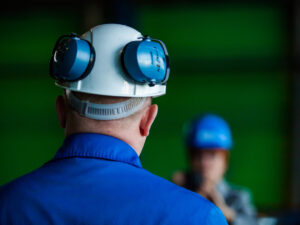
The Impact of Lighting on Workplace Productivity and Employee Well-being
In the modern workplace, where productivity and employee well-being are paramount, one often overlooked aspect is lighting. The quality and quantity of lighting in a workspace can have a profound impact on employee performance, mood, and overall health.
The Power of Proper Lighting
Enhanced Productivity
Adequate lighting levels play a crucial role in maintaining optimal productivity levels among employees. Proper lighting ensures that tasks can be performed accurately and efficiently, reducing errors and enhancing workflow. Well-lit workspaces promote alertness and focus, leading to improved task performance and overall productivity.
Reduced Eye Strain
Insufficient or poor-quality lighting can strain the eyes, leading to discomfort, headaches, and vision problems. By providing adequate illumination, employers can reduce eye strain and create a more comfortable working environment for their employees. Proper lighting also contributes to a safer workplace by minimising the risk of accidents and injuries.
Improved Mood and Morale
Natural or full-spectrum lighting has been shown to positively impact mood and mental well-being. Exposure to natural light can help regulate circadian rhythms, promote better sleep patterns, and reduce symptoms of depression and anxiety.
By incorporating natural light or high-quality artificial lighting into the workplace, employers can foster a more positive and uplifting atmosphere, boosting employee morale and satisfaction.
Apex Environmental’s Lighting Assessment Services
Comprehensive Lighting Assessments
Apex Environmental offers specialised lighting assessments to evaluate the quality and effectiveness of lighting systems in the workplace. These assessments encompass factors such as illuminance levels, light distribution, glare, colour rendering, and energy efficiency.
By conducting thorough assessments, Apex Environmental provides organisations with actionable insights to optimise their lighting environments for maximum comfort and productivity.
Recommendations for Improvement
Based on the findings of the lighting assessments, Apex Environmental offers tailored recommendations for improving lighting conditions in the workplace. These recommendations may include adjustments to lighting fixtures, changes in lighting layout or design, and the implementation of energy-efficient lighting solutions.
By implementing these recommendations, organisations can create brighter, more inviting workspaces that support employee well-being and performance.
Conclusion
By investing in adequate lighting levels and high-quality lighting systems, organisations can enhance productivity, reduce eye strain, and improve the overall well-being of their employees.
With the support of Apex Environmental’s lighting assessment services, organisations can take proactive steps to optimise their lighting environments, ensuring that employees have the bright, uplifting spaces they need to thrive.








